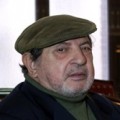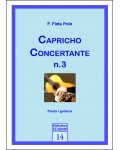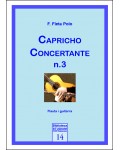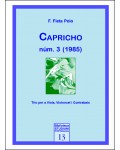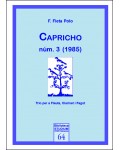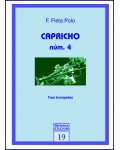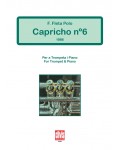
No products
Prices are tax included
Product successfully added to your shopping cart
There are 0 items in your cart. There is 1 item in your cart.
- English
- Castellano
- Català
Francisco Fleta Polo was born in 1931 in Barcelona. He attended the Barcelona Conservatory for Advanced Studies in Music where he obtained an advanced certificate in the Violin, Viola and Trumpet qualifications and trained as a Composer and Conductor.
He played the viola in the Symphonic orchestras of the Gran Teatre del Liceu, Barcelona’s opera house (1961-64), RTVE, the Spanish state broadcasting company, (Madrid 1965-69) and the City of Barcelona (since 1970). He was selected for the post of Viola Professor at the Barcelona Conservatory for advanced studies in music in a national eliminatory exam.
Hi has a very wide catalogue of works for several instruments and instrumental ensembles which have played by several generations of students in the course of their music studies. These works were written with his students in mind. He has also composed works for orchestra including four symphonies; the second and the third were first played in public by the Barcelona Symphonic orchestra and the fourth by the Barcelona Municipal Band. His Sonata for the Viola op.69 was chosen to be played at the International Viola Congress in Illinois (USA). For his students he has designed a highly successful practical course for the Viola and Violin. Most of his works are edited by this company (Clivis Publicacions).
His music is rich in counterpoint and timbre effects which give it a very unique air of genius.
-
Capricho concertante núm. 3
Edition: PrintedCapricho concertante no. 3 is a two-movement piece for flute and guitar. In this work, the order of the factors does not change the product, since both instruments are given the same concertante treatment, without giving either instrument prevalence over the other.
15,00 € -
Capricho concertante núm. 3 (1987)
Edition: DigitalCapricho concertante no. 3 is a two-movement piece for flute and guitar. In this work, the order of the factors does not change the product, since both instruments are given the same concertante treatment, without giving either instrument prevalence over the other.
8,72 € -
Capricho núm. 3 (1985)
Edition: DigitalThe initial cell of the descending arpeggio gives unity to the work that, despite its briefness, clearly shows the personality of Fleta Polo’s language and his deep knowledge of the different instruments he writes for.
10,47 € -
-
-
-
Capricho núm. 3 (1985)
Edition: DigitalThe initial cell of the descending arpeggio gives unity to the work that, despite its briefness, clearly shows the personality of Fleta Polo’s language and his deep knowledge of the different instruments he writes for.
10,47 € -
Capricho núm. 3 (1985)
Edition: DigitalThe initial cell of the descending arpeggio gives unity to the work that, despite its briefness, clearly shows the personality of Fleta Polo’s language and his deep knowledge of the different instruments he writes for.
10,47 € -
-
Capricho núm. 4
Edition: DigitalThe first movement is almost a perpetual movement in which the imitative writing stands out from the first to the last bar. The second movement, slower and reflexive, raises an issue that is revealed on three occasions.
8,72 € -
Capricho núm. 5
Edition: DigitalThe composer he does not limit himself to using the trumpet as a fanfare instrument; rather he makes use of all its resources. The piece, though not exceptionally difficult to play, is demanding at the chamber level. The piano part is optional: it reinforces the rhythmical element of the piece and can help to set tuning when the piece is played by...
6,69 € -
Capricho núm. 5
Edition: PrintedThe composer he does not limit himself to using the trumpet as a fanfare instrument; rather he makes use of all its resources. The piece, though not exceptionally difficult to play, is demanding at the chamber level. The piano part is optional: it reinforces the rhythmical element of the piece and can help to set tuning when the piece is played by...
11,50 €

